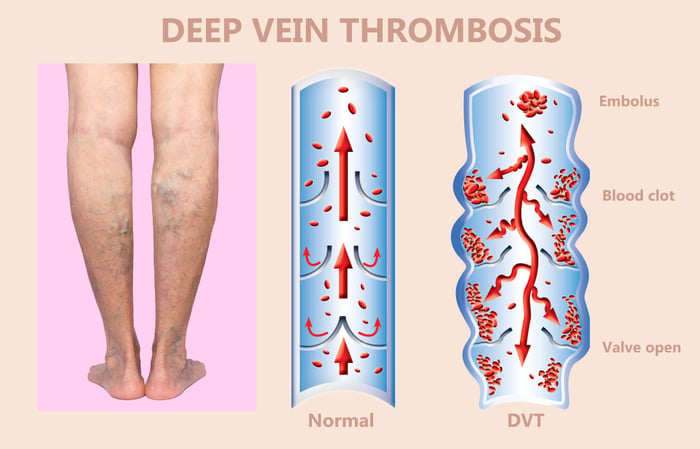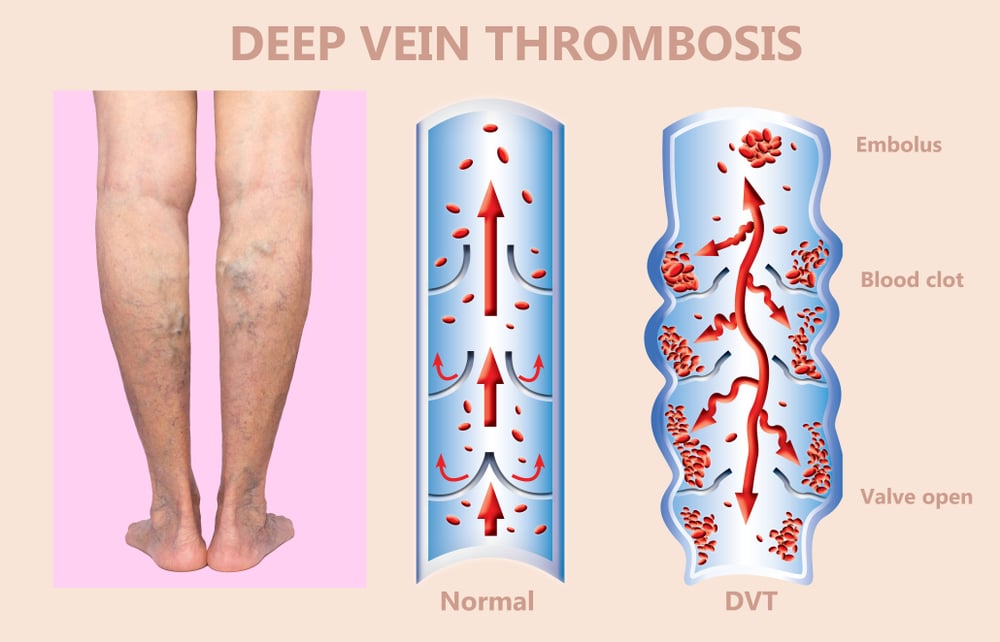What to Expect After Experiencing a DVT Deep Vein Thrombosis (DVT)?

When you hear the term "blood clot", most people have serious initial concerns. And for good reason. Deep vein thrombosis (DVT), or blood clots, often develop in the legs and should be addressed with a sense of seriousness and urgency. But first, what exactly is a DVT or blood clot, and what happens after one occurs?
In this video, I go into more detail on this subject of Deep Vein Thrombosis (DVT) in the video below:
Most often, a DVT occurs in the leg or more specifically in the calf muscle. It's important to know what happens in one's body after a DVT or blood clot occurs in the leg. Here are some possibilities of what might occur after a DVT:
- The blood clot can stay put and become a hardened permanent area inside the deep tissue. This is known as post-thrombotic syndrome.
- The clot can extend and grow inside the vein, traveling through the leg. This is one of the reasons why people are put on blood thinners with DVT.
- Lastly, and most concerning, would be if the clot breaks off and travels its way up the leg and to the lungs. This would cause a pulmonary embolism, which can actually be fatal.
Long-Term Care Options After a Blood Clot
If you have or have had one or multiple blood clots in your legs, there are ways to prevent this occurrence in the future. Most likely, if you have had a blood clot or DVT, you should be on blood thinners. So then, there is a better chance that the clot will dissolve completely, and your vein health and blood flow will resolve back to their normal state, which would be the best outcome.
The good news is that blood clots within the leg usually dissolve and leave minimal damage. However, veins can become damaged after a DVT occurs. For instance, after a DVT dissolves, the small valves inside of a vein can become worn and damaged, causing improper blood flow and vein reflux. Some common symptoms of DVT are swelling and pain in the leg, especially the calf. But, there is the chance that they could either not dissolve, dissolve and leave vein damage, or travel their way up to the lungs, potentially causing fatal harm.
The only way to know if you have a blood clot if you have the symptoms of swelling and pain is to get an ultrasound of the leg. Your provider will have to order this, and they need to know that this is a big concern for you. They can then order an ultrasound to find out for sure.
People with a blood clot, both in the early stage and the late stage can benefit from the use of compression stockings. Compression stockings are recommended during the early phase of treatment after a DVT as well as daily use for people with post-thrombotic syndrome.


